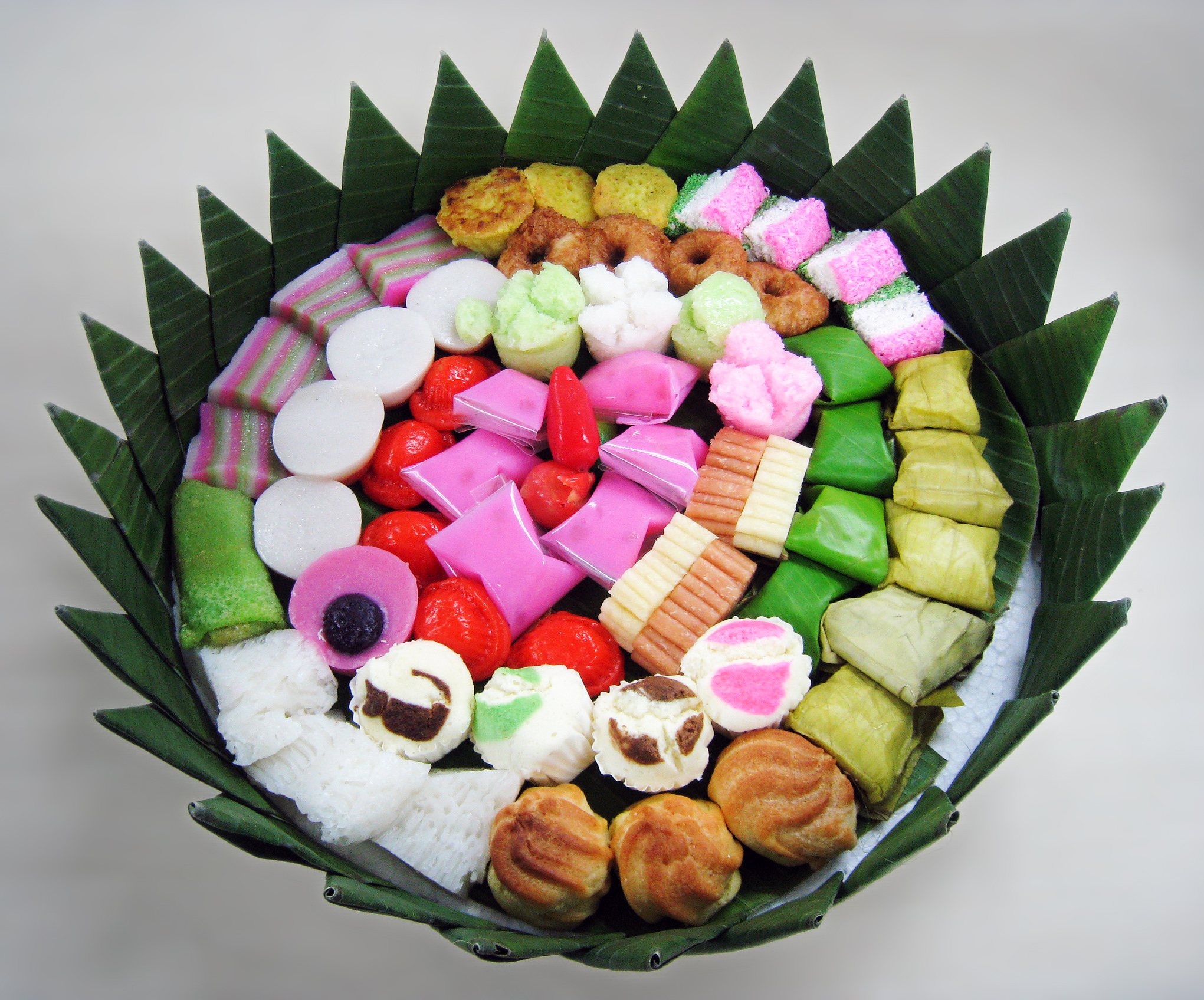Kue Talam on:
[Wikipedia]
[Google]
[Amazon]
''Kue talam'' is an

Kue talam recipes
Kue talam video recipe
Kue talam video recipe on Youtube
{{Indonesian cuisine Kue Foods containing coconut Street food in Indonesia Burmese cuisine
Indonesian
Indonesian is anything of, from, or related to Indonesia, an archipelagic country in Southeast Asia. It may refer to:
* Indonesians, citizens of Indonesia
** Native Indonesians, diverse groups of local inhabitants of the archipelago
** Indonesian ...
'' kue'' or traditional steamed snack made of a rice flour, coconut milk
Coconut milk is an opaque, milky-white liquid extracted from the grated pulp of mature coconuts. The opacity and rich taste of coconut milk are due to its high oil content, most of which is saturated fat. Coconut milk is a traditional food i ...
and other ingredients in a mold pan called ''talam'' which means "tray" in Indonesian
Indonesian is anything of, from, or related to Indonesia, an archipelagic country in Southeast Asia. It may refer to:
* Indonesians, citizens of Indonesia
** Native Indonesians, diverse groups of local inhabitants of the archipelago
** Indonesian ...
. The cake mold used to create kue talam are either larger rectangular aluminium tray or smaller singular cups made from ceramics, aluminium, melamine or plastic.
Kue talam and its variations are commonly found in various Indonesian regional cuisine traditions; from Betawi, Minang, Malay
Malay may refer to:
Languages
* Malay language or Bahasa Melayu, a major Austronesian language spoken in Indonesia, Malaysia, Brunei and Singapore
** History of the Malay language, the Malay language from the 4th to the 14th century
** Indonesi ...
, Batak
Batak is a collective term used to identify a number of closely related Austronesian ethnic groups predominantly found in North Sumatra, Indonesia, who speak Batak languages. The term is used to include the Karo, Pakpak, Simalungun, Toba, ...
, to Sundanese
Sundanese may refer to:
* Sundanese people
* Sundanese language
* Sundanese script
Standard Sundanese script (''Aksara Sunda Baku'', ) is a writing system which is used by the Sundanese people. It is built based on Old Sundanese script (' ...
and Javanese. Kue talam was introduced by the Sino-Burmese
Chinese Burmese, also Sino-Burmese or Tayoke, are a Burmese citizens of full or partial Chinese ancestry. They are group of overseas Chinese born or raised in Myanmar (Burma). As of 2012, the Burmese Chinese population is estimated to be as hi ...
to Lower Myanmar, where it is known as ''kway talan'' ().
Kue talam usually has two layers; the top one is white made from savoury creamy coconut milk, while the bottom one is coloured according to each variant's recipe. The green pandan flavour, the yellow yam and the brown coconut sugar flavours are the most common one.
Ingredients
The basic ingredients of kue talam are rice flour,coconut milk
Coconut milk is an opaque, milky-white liquid extracted from the grated pulp of mature coconuts. The opacity and rich taste of coconut milk are due to its high oil content, most of which is saturated fat. Coconut milk is a traditional food i ...
, granulated sugar
Sugar is the generic name for sweet-tasting, soluble carbohydrates, many of which are used in food. Simple sugars, also called monosaccharides, include glucose, fructose, and galactose. Compound sugars, also called disaccharides or double ...
, salt, and pandan leaves. Other ingredients might be included to create the lower coloured part.
The top one is white and made simply using more coconut milk, rice flour, sugar and salt, and usually tastes savoury, mild sweet with softer creamy consistency. The bottom one is a little bit firmer and has colours according to added ingredients. The bottom coloured layer are poured first into the mold. After being half cooked being steamed for some times, the white layer is added on top and steamed further.
The mold being used traditionally is rectangular aluminium tray mold, hence the name ''talam'' (tray), thus the cake is required to be cut into rectangular or square shape prior of serving. Today however, the singular small cups akin to '' chawan'' (Chinese teacup) are often used as mold; either made from ceramics, aluminium, plastic or melamine.
Variations
Sweet
Kue talam normally tastes sweet and consists of two layers, white top and coloured bottom. Kue talam could be made in various flavours which contributes to the colours of the bottom part, they are: #Green: the green bottom kue talam is using ''suji'' or the green juice acquired from pandan leaf. #Brown: the brown colour is acquired from ''gula merah'' or ''gula jawa'' ( coconut sugar). #Yellow: the yellow bottom is acquired from red or yellowsweet potato
The sweet potato or sweetpotato (''Ipomoea batatas'') is a dicotyledonous plant that belongs to the Convolvulus, bindweed or morning glory family (biology), family, Convolvulaceae. Its large, starchy, sweet-tasting tuberous roots are used as a r ...
, pumpkin or corn.
#Purple: the purple colour is acquired from ''ubi ungu'' or purple yam or taro.
Savoury
Most of kue talam tastes sweet, however there is also a salty and savoury variants that uses ''ebi'' or dried shrimp for flavour, which is called ''talam udang'' or "shrimp talam" in Betawi cuisine of Jakarta.See also
* Kue lapis * Kue pancong * Nagasari * SerabiReferences
External links
Kue talam recipes
Kue talam video recipe
Kue talam video recipe on Youtube
{{Indonesian cuisine Kue Foods containing coconut Street food in Indonesia Burmese cuisine